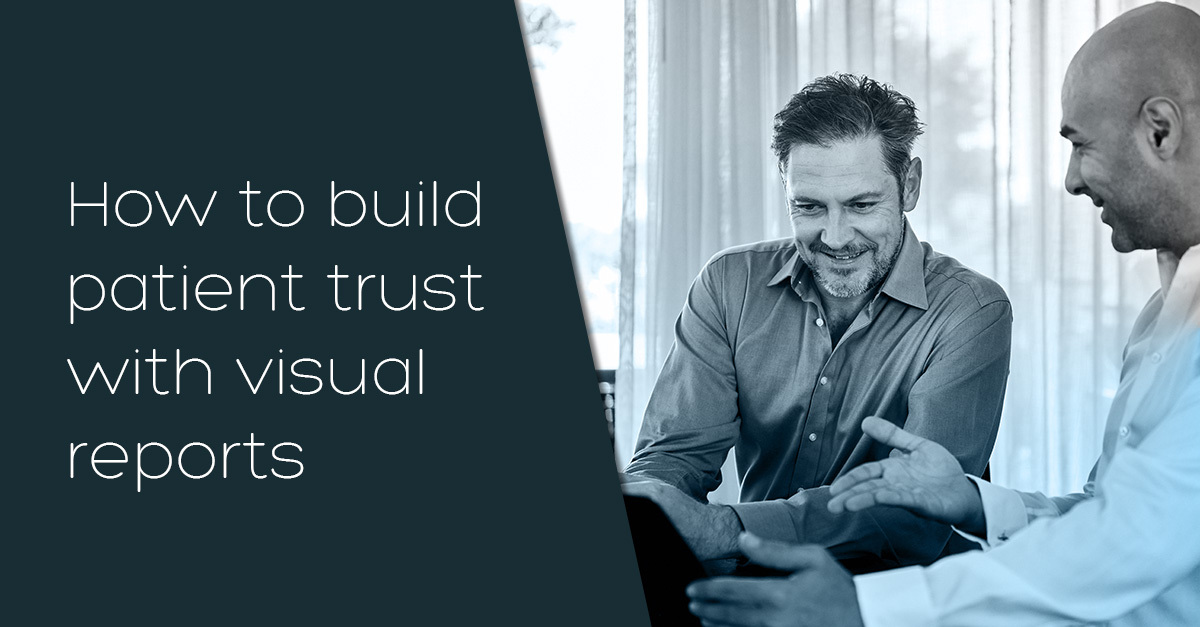How to build patient trust with visual reports
5th May 2022

Being able to run through visual reports with patients is a great way of providing education and deliver better clinical outcomes. The ability to showcase progress through visual analysis can give insight into the success of, or adherence to, a prescribed treatment plan.
Demonstrating to patients how receptive their eye(s) have been to treatment, is highly useful for conditions like dry eye. Any condition that requires patients to carry out treatment at home, including supplements, eye drops and warm compressions, is often challenging for the patient to see progress. They may not see any reduction in redness, for example, causing them to lose faith in their treatment plan. Having a visual record of progress can therefore help to reassure them, motivating them to stick to their treatment, eventually alleviating the condition and leading to a satisfactory outcome.
Visual reports and images are also highly beneficial when it comes to contact lens patients. From the initial assessment and CL fit, to the regular check-ups and annual evaluation. The ECP can refer to the reports and images, demonstrating to the patient how their eye has tolerated lens use and how their prescription has been stable, or if they require a slight change to their lens power. The images will show the patient that their eye is healthy, and well lubricated. This can help CL wearing confidence in the patient resulting in CL retention for the ECP.
AOS visual reporting, provides patients with the ability to see images of their eyes alongside the analysis. Presented in a numerical grading system the reports allow them to see their progress and/or any changes. It helps to build trust, rapport and compliance. Particularly as this imaging and reporting can also be done virtually, giving patients flexibility around their eye-health appointments whilst still ‘seeing’ their ECP. Giving patients the baseline numbers which demonstrate incremental changes instils confidence in the designated treatment. It provides an opportunity for the patient to be involved in decision making around their treatment plan with their ECP.
Ultimately, the ECPs’ overall business aims are to drive patient care and outcomes while also driving retention and attraction. Using a patient-centric approach, ‘Powered by Patients’, that educates them through the process, such as with visual reporting, will give a far greater understanding of a treatment plan, resulting in greater confidence in using your practice and making them more likely to refer you.
By making things better for your patients, you’re in turn making things better for the business.
